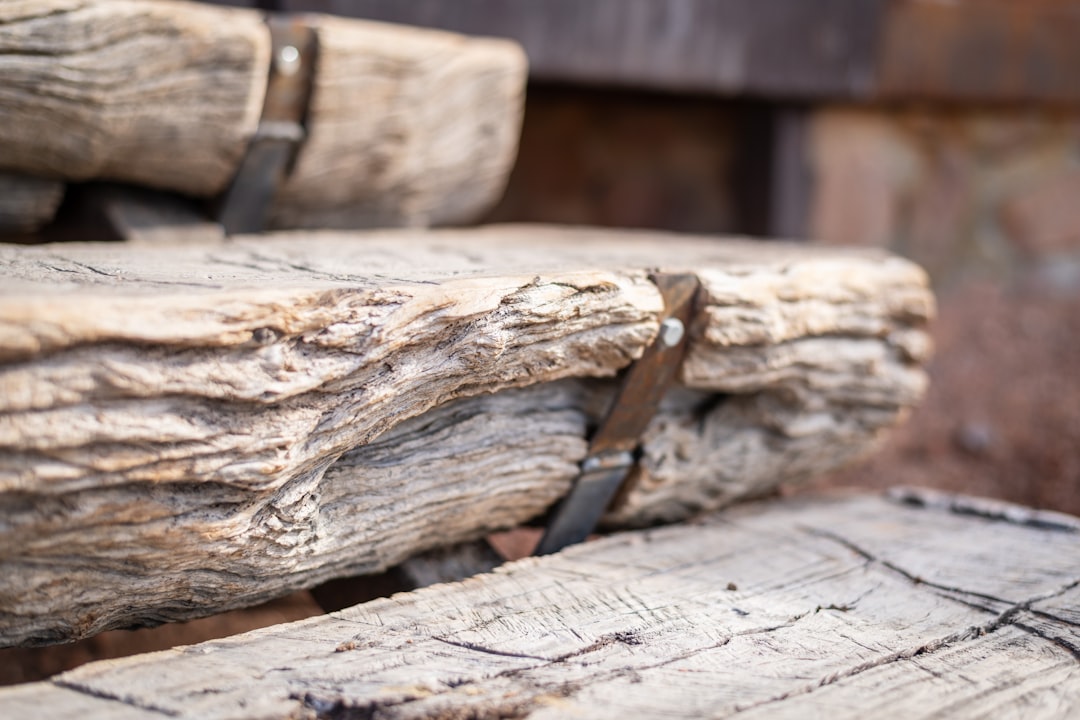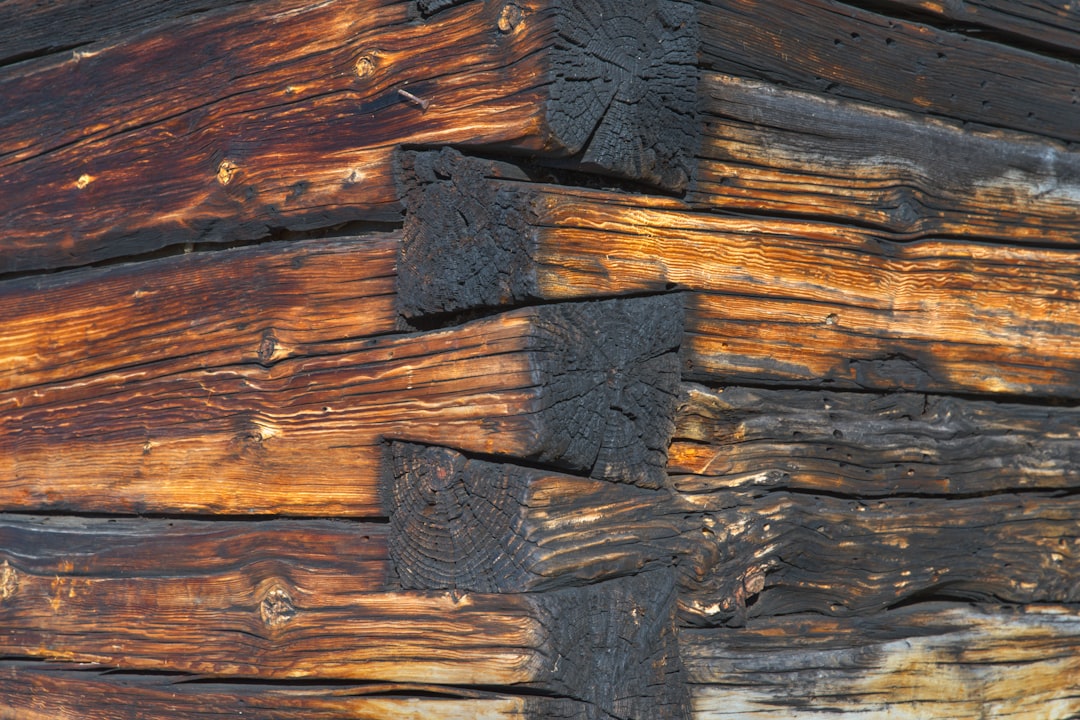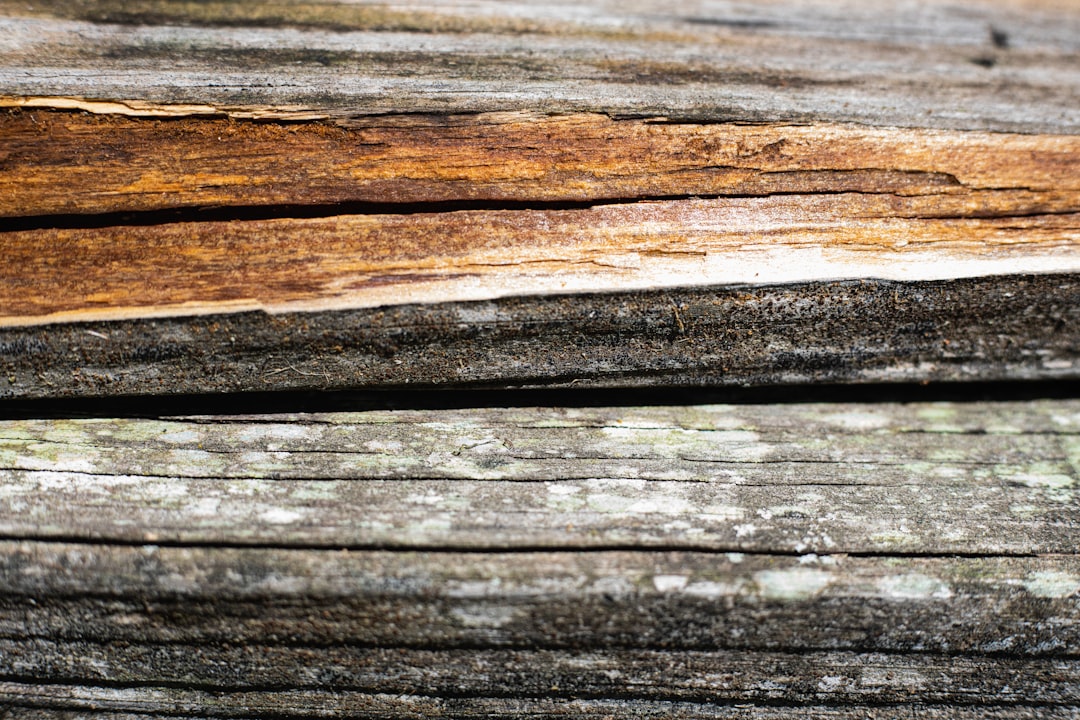

Engage prospects with a scan and streamline customer engagement with FREE QR code marketing tools by Sona – no strings attached!
Create a Free QR CodeFree consultation

No commitment

Engage prospects with a scan and streamline customer engagement with FREE QR code marketing tools by Sona – no strings attached!
Create a Free QR CodeFree consultation

No commitment
In today’s digitally driven world, QR codes have evolved from a novelty into a strategic bridge between offline engagement and online action. For wood rot repair services, QR codes create a seamless pathway from field signage, jobsite interactions, and printed materials to instant estimates, inspection bookings, and educational resources. Homeowners can scan a code in seconds and land exactly where you want them to be: a form, a scheduling tool, or a helpful explainer that builds trust and accelerates conversions.
Wood rot and dry rot affect countless residential and commercial properties, which means interest often spikes the moment a homeowner notices damage or passes a yard sign near an active or recent repair. Traditional outreach methods like flyers and brochures rarely capture that intent. By embedding QR codes into the materials you already use, you transform every surface into a measurable, actionable touchpoint in home repair that feeds data back into your CRM for smarter follow-up.
QR-led experiences make your marketing measurable, your workflows efficient, and your customer education more compelling. With connected tools such as Sona QR, you can generate dynamic codes, track scan behavior, and sync insights with your CRM and ad platforms. The result: fewer missed opportunities, faster response times, and a consistent pipeline of qualified leads ready for repair and preventative services.

QR codes bridge the gap between physical touchpoints and digital outcomes, making it easier to capture homeowner interest, educate clients about prevention, and drive real business results. The key is to replace analog processes that introduce friction: paper brochures that never drive action, manual sign-up sheets that get lost, and estimate forms left behind with no way to track who is ready to move forward.
Challenges like missing high-value prospects who never fill out a form or lacking a quick way to capture post-inspection interest can stall growth and let competitors win the race to respond. By designing QR workflows with clear calls to action and trackable destinations, wood rot repair companies turn curiosity into conversions and anonymous attention into qualified demand.
For example, instead of leaving a homeowner with a stapled packet of maintenance tips, place a QR code that links to seasonal prevention videos and an interactive checklist. The code can trigger an email sequence or SMS follow-up tailored to the time of year, localized humidity risk, and the homeowner’s recent scan behavior. Over time, this turns education into recurring service revenue, and it ensures that the first company to engage meaningfully is yours.

Wood rot repair businesses lose visibility when interest happens offline, such as a neighbor spotting your yard sign or a property manager filing away your brochure. Without an immediate digital next step, those potential customers do not convert and your CRM stays empty. QR codes remove that friction and connect real-world moments to measurable engagement that leads to booked work.
Beyond capturing demand, QR codes also speed up response time. A homeowner who discovers a spongy sill or fungal growth needs answers quickly. If they can scan a code on your truck and launch a one-click chat or request an assessment in under a minute, you shorten the path from discovery to decision. That speed advantage is often the difference between winning and losing a job.
When you place QR codes on appointment cards, jobsite banners, and post-repair care sheets, you get continuous feedback on messaging and placement. Over time, you will know which neighborhoods and materials deliver the best results, allowing you to reinvest in what works and trim spend on what does not.

QR codes serve different roles along the customer journey, so selecting the right format is critical to minimizing missed leads and streamlining follow-up, including home maintenance. The most effective formats for wood rot repair align with familiar homeowner actions: learning about the problem, requesting help, and saving trusted contact information for emergencies.
Start by mapping each touchpoint to the action you want. A yard sign may need a simple web link to a one-page quote form. An estimate folder might benefit from a QR that opens a pre-filled email. Warranty documents work well with dynamic codes that link to an evolving library of aftercare content. Match the code to the moment and the intent.
A thoughtful mix of static and dynamic codes ensures both always-on and campaign-specific efforts are measurable. With Sona QR, you can generate and manage all code types in a central dashboard, set rules for destination changes, and maintain brand consistency across every asset.

Many high-value wood rot leads are lost between interest and action. You can reclaim that lost revenue by deploying QR codes wherever a homeowner might encounter your brand. Each placement should provide an immediate, compelling next step and a reason to scan now rather than later.
Think of every surface as a conversion point. What message belongs on a truck wrap versus a jobsite banner versus a post-repair checklist? The right call to action varies by context. A neighbor walking a dog past your project might respond to “Scan for a local estimate.” A homeowner reviewing an inspection report may prefer “Scan to confirm your repair plan.”
By turning every physical asset into a measurable onramp, you create a resilient pipeline that does not depend on chance or memory. When a homeowner’s interest sparks, your QR code is ready with the exact next step.

Disconnected campaigns and static content drain resources and miss the moment when homeowners are most ready to act. By embedding QR-driven actions into each core touchpoint, you guide prospects from awareness to conversion with less friction and better data.
Choose use cases that map to common interactions in the wood rot journey. A simple scan should either help a homeowner diagnose, schedule, learn, or commit. The more tailored the destination, the higher the completion rate and the greater the trust you build through clarity and speed.
When each use case is backed by a dedicated QR code and a tailored landing experience, your offline presence becomes a consistent source of trackable, high-intent opportunities.
Each scan is a behavioral signal. It tells you who engaged, where, when, and why. By placing unique QR codes across your touchpoints, you can automatically segment audiences and feed those segments into email, SMS, and paid media retargeting for precise follow-up.
Segmentation turns raw engagement into revenue. Homeowners who scan an emergency support code should see rapid-response messaging and options to schedule immediately. Those who explore prevention tips belong in a nurture path that surfaces seasonal checklists, moisture control advice, and occasional promotional inspections.
With Sona QR, each code is a smart entry point that captures context-rich data. The platform can route scans into dynamic lists, trigger workflows, and fuel remarketing without manual spreadsheet wrangling, allowing your team to act on real behavior instead of assumptions.
QR codes are connective tissue across your offline and digital channels. They standardize the way you capture intent, unify the data you collect, and let you optimize messaging in real time across print, events, signage, and media.
A connected funnel begins with a consistent call to action and ends with measurable outcomes. By ensuring each physical asset points to a specific digital destination, you can track performance by channel, stage, and message, then redistribute budget with confidence.
QR codes become the offline onramp to your digital engine. With a centralized platform like Sona QR, you manage all codes, monitor performance across channels, sync scan data with your CRM, and tie engagement to revenue. This creates a single source of truth across campaigns and seasons.
A strong QR strategy does more than put squares on signs. It starts with clear outcomes and ends with a feedback loop that improves every deployment. The following steps help you plan, launch, and refine campaign execution so that every scan contributes to pipeline growth and customer satisfaction.
Think of this as your playbook for converting offline attention into online action, then linking that action to revenue. Each step can be completed quickly, then iterated as data rolls in. As you build muscle memory, your team will move from one-off campaigns to a durable, always-on acquisition system.
Start with a single, high-impact scenario. For wood rot repair, common goals include accelerating estimate requests in targeted neighborhoods, capturing post-inspection intent, and simplifying warranty registrations. Clarify the business outcome so you can measure success precisely.
Your choice depends on how often the destination will change and how much data you need. In most acquisition campaigns, dynamic QR codes are the best fit because they support tracking, flexible routing, and easy updates.
Design impacts scannability and conversion. Keep codes large enough to scan from a reasonable distance, add a clear frame, and place a benefit-driven call to action next to the code.
Start with placements that see frequent foot or vehicle traffic and where intent is strongest. Prioritize assets already in circulation so small changes yield big gains.
Measurement turns QR campaigns into a growth system. Monitor scans, conversions, and revenue impact by source, then iterate on creative, placement, and destinations to improve performance.
A brief weekly review keeps campaigns sharp. Look for scan spikes that correlate with weather, event participation, or promotional mail drops. Use those insights to schedule new pushes when interest is likely to be highest.
One of the most persistent frustrations in wood rot repair is proving which marketing activities drive real revenue. Without clear attribution, you are left guessing what brought a prospect to your door. QR codes provide the missing link by attaching trackable data to every physical touchpoint, then syncing that data to your CRM and analytics tools.
The goal is not just to count scans, but to understand how each engagement advances the buyer journey: from a first look at a yard sign to a scheduled inspection and a paid repair. When scan behavior is tied to contact records and financial outcomes, your team can double down on what works and cut what does not.
Integrated analytics transform marketing from a cost center into a performance driver. Your team gains the confidence to scale what works and the evidence to explain why.
QR codes work best when they are unique, trackable, and tied to an immediate value proposition. A few practical adjustments can significantly increase scan rates and downstream conversions, especially in a field where urgency often determines the winner.
Make your QR program part of standard operating procedures. Include codes on every jobsite sign, inspection folder, invoice, and warranty certificate. Train field staff to explain why scanning helps homeowners get faster answers and better care.
Small, consistent improvements add up to a powerful growth loop. Over time, you will build a data-rich engine where every print piece and every jobsite touchpoint contributes measurable value.
A regional wood rot repair company added dynamic QR codes to warranty certificates. Homeowners could scan to access aftercare guides, chat for quick questions, or request emergency support. Engagement increased rebookings and retention, and the company learned which content reduced post-repair callbacks.
Another contractor group placed QR banners at active worksites with “Scan for a neighborhood estimate.” The result was a steady stream of hyper-local inquiries that converted at higher rates than generic digital ads. Attribution also improved because yard sign scans were uniquely tagged, revealing which streets and subdivisions responded best.
Inspection reports enhanced with QR links to short prevention videos and localized moisture control advice led to more referrals and repeat business. Homeowners appreciated practical, bite-sized guidance and began scanning seasonal reminder emails loaded with QR codes that linked back to tailored checklists and booking pages.
A partnership with local realtors produced co-branded postcards for pre-listing inspections. QR codes sent sellers to a rapid assessment request page with a realtor priority queue. The initiative reduced days on market for participating agents and created a recurring stream of repair projects. Over six months, the team learned which neighborhoods produced the most scans per thousand mailers and focused resources accordingly.
Finally, a company added QR magnets to technician kits with “Scan for 24-hour support.” Property managers used the magnets in mechanical rooms and maintenance offices. When emergencies arose, scanning launched a pre-filled SMS with building details. Response time dropped, satisfaction increased, and the company secured several multi-property contracts.
QR codes are more than a shortcut to a website. They are a strategy for converting every real-world impression into a measurable digital action. For wood rot repair services, this means turning jobsite presence, printed materials, and field workflows into consistent lead generation, faster scheduling, and smarter education.
Here is what a QR-first approach delivers: instant engagement from yard signs, vehicles, and brochures; a connected experience that moves people from curiosity to commitment; and actionable data that ties each scan to pipeline and revenue. When offline and online channels speak the same language, you build a resilient, high-confidence growth engine.
With Sona QR, you can generate dynamic and static codes, manage them centrally, track performance by channel and location, and sync scan activity with your CRM and ad platforms. You will see which materials convert, what messages resonate, and how interest turns into booked jobs. Start creating QR codes for free for your most common touchpoints, then expand as insights accumulate.
The path forward is simple: choose a use case, create a clear call to action, deploy codes where intent is highest, and measure everything. Every scan becomes a signal you can act on. Every jobsite becomes a launchpad for the next one. And every homeowner who wants help can get it fast, without friction or confusion.
QR codes have revolutionized wood rot repair services by transforming traditional customer interactions into dynamic, trackable engagements that drive measurable growth. Whether it’s streamlining customer acquisition, enhancing service transparency, or providing instant access to repair guides and maintenance tips, QR codes empower businesses to deliver superior customer experiences while capturing valuable data on every scan.
Imagine your clients effortlessly accessing detailed repair histories, instructional videos, or warranty information right from their smartphones—building trust and loyalty with every interaction. With Sona QR, you can create dynamic, trackable QR codes in seconds, update content instantly without reprinting, and link every scan directly to customer insights and revenue streams. No missed opportunities, just smarter, more effective service delivery.
Start for free with Sona QR today and turn every scan into a step toward stronger customer relationships and increased business success in wood rot repair services.
Wood rot can be identified by signs such as spongy wood, fungal growth, or damage to sills and beams, which may feel soft or crumbly to the touch.
Signs of wood rot include spongy or decayed wood and fungal growth; prevention involves managing moisture, following maintenance schedules, and using educational resources linked via QR codes for seasonal tips and humidity control.
Costs vary, but QR codes on yard signs and estimates can provide homeowners with instant, localized repair estimates to give an accurate idea of pricing.
Look for local yard signs, vehicle wraps, or printed materials with QR codes that link to verified repair services, allowing you to book inspections or get estimates quickly.
Effective methods include timely inspections, virtual damage assessments via QR code forms, prompt scheduling of repairs, and following up with maintenance plans to prevent recurrence.
Use Sona QR's trackable codes to improve customer acquisition and engagement today.
Create Your FREE Trackable QR Code in SecondsJoin results-focused teams combining Sona Platform automation with advanced Google Ads strategies to scale lead generation

Connect your existing CRM

Free Account Enrichment

No setup fees
No commitment required

Free consultation

Get a custom Google Ads roadmap for your business






Launch campaigns that generate qualified leads in 30 days or less.
